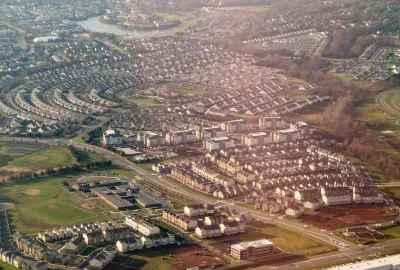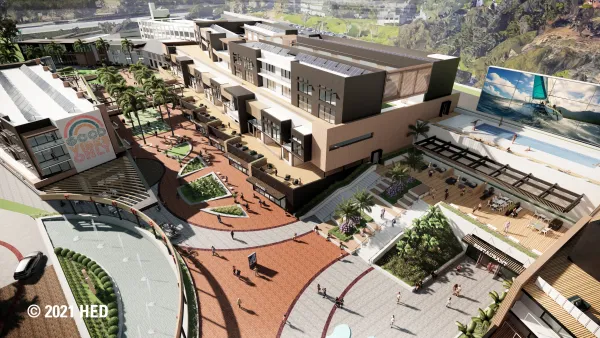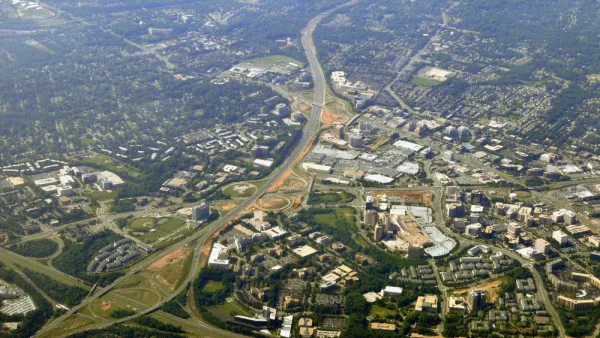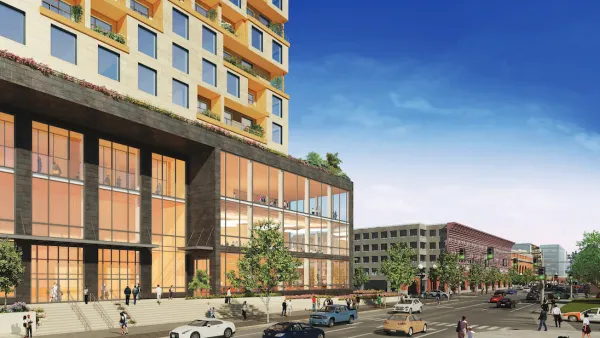How to equip suburban sprawl for a different future.

In an opinion piece in Greater Greater Washington, Aditya Inamdar writes, “We can’t change the original design of suburban neighborhoods, but we can retrofit suburbs to better serve the people who live and work in them.”
For Inamdar, redeveloping office parks and shopping centers to serve new, more efficient uses calls for two key aspects: private development and public policy.
In situations where private redevelopment is simple and profitable, Inamdar writes, “the role of public agencies is more regulatory,” to “ensure that the proposals align with the jurisdiction’s goals, approved plans, policies, and standards.” Public agencies can support the success of retrofitting projects by aligning on clear goals, streamlining permitting and approval processes where possible, and keeping the community involved throughout the process.
In other cases, public agencies may take the lead on a project. “This is typically the case with older suburban activity centers or commercial corridors with fragmented ownership, where it’s simply too complicated for a private developer to make a move.” When agencies want to target an area for redevelopment, they can encourage developers to become partners by backing up their plan with investment in infrastructure that will support the project, actively recruiting developers, and engaging in substantial community outreach work to “understand community needs and preferences before plans go to planning commissions and city/county councils for adoption.”
Inamdar sees the retrofitting of suburban shopping centers, malls, and office parks in the Washington, D.C. region as “an opportunity to create desirable places out of underutilized properties, undeveloped pieces of land, parking lots, and aging commercial strips” and “bring the benefits of urban spaces out to suburbia.”
FULL STORY: Two ways to give our sprawling suburbs a glow up

Analysis: Cybertruck Fatality Rate Far Exceeds That of Ford Pinto
The Tesla Cybertruck was recalled seven times last year.

National Parks Layoffs Will Cause Communities to Lose Billions
Thousands of essential park workers were laid off this week, just before the busy spring break season.

Retro-silient?: America’s First “Eco-burb,” The Woodlands Turns 50
A master-planned community north of Houston offers lessons on green infrastructure and resilient design, but falls short of its founder’s lofty affordability and walkability goals.

Test News Post 1
This is a summary

Analysis: Cybertruck Fatality Rate Far Exceeds That of Ford Pinto
The Tesla Cybertruck was recalled seven times last year.

Test News Headline 46
Test for the image on the front page.
Urban Design for Planners 1: Software Tools
This six-course series explores essential urban design concepts using open source software and equips planners with the tools they need to participate fully in the urban design process.
Planning for Universal Design
Learn the tools for implementing Universal Design in planning regulations.
EMC Planning Group, Inc.
Planetizen
Planetizen
Mpact (formerly Rail~Volution)
Great Falls Development Authority, Inc.
HUDs Office of Policy Development and Research
NYU Wagner Graduate School of Public Service




























